Marketing data and identity
The latest on how brands, agencies, and media buyers are using data and identity to better understand audiences, improve targeting, and drive performance across channels.
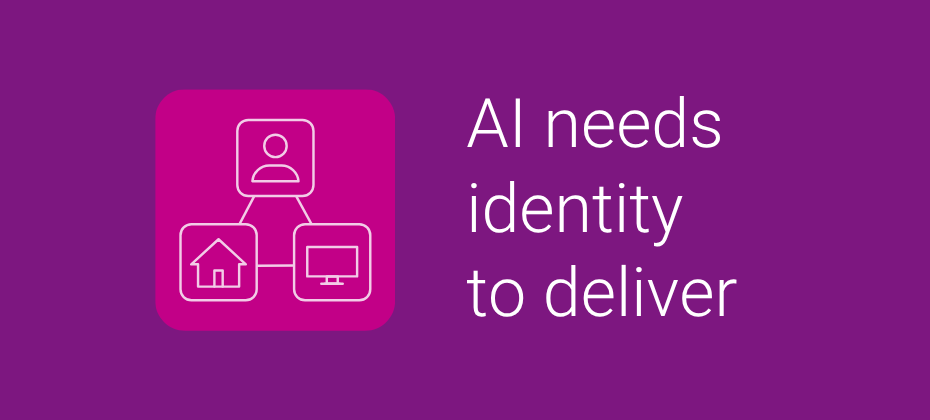
Originally appeared in The Current Forget the cookie delay — AI is already rewriting the rules of advertising. While the industry was busy debating yet another postponement of Chrome’s third-party cookie phaseout, AI quietly became the most disruptive force in marketing. But here’s the twist: AI doesn’t work without identity. If marketers want results — real outcomes, not just impressions — they need to prioritize the data that makes AI go. First-party data strategies are now mainstream. Interoperable identity solutions like Unified I.D. 2.0 (UID2) and ID5 are gaining adoption across the open web. Connected TV (CTV) has grown into a performance-focused, cookieless channel. Contextual and geo-based targeting have become smarter and more scalable. Identity graphs are helping marketers stitch together signals across devices, platforms, and channels. The foundation for a better ecosystem isn’t being built — it’s already here. The AI hype is over — and the stakes are higher It’s no longer buzz. AI is here, and it’s already reshaping how we plan, activate, and measure advertising. We’re seeing the rise of agentic AI: systems that don’t just surface insights but act on them. These AI agents are identifying patterns, building audiences, optimizing media buys, and analyzing performance. AI is helping marketers stop guessing and start improving. But there’s a catch — one we can’t afford to overlook. AI is only as good as the data it works with. “Garbage in, garbage out.” as the saying goes. And in advertising, that means if you don’t know who you’re reaching, even the smartest AI won’t drive results. To unlock AI’s full potential, marketers need a strong, privacy-safe identity foundation. Identity is the fuel that makes AI work AI can personalize creative, optimize in-flight campaigns, and even recommend which channels to prioritize — but it can’t do any of that well without context. And context starts with identity. Identity connects signals from different devices, logins, channels, and interactions to real people. It tells your AI models who you’re talking to — not just what they clicked. That kind of clarity gives AI the power to make smarter predictions, uncover insights, and deliver relevance at scale. Without identity, AI is guessing. With identity, it’s delivering. Identity is the foundation of the outcomes era We’re living in a performance-driven age. Impressions and clicks are no longer enough. Marketers today are being judged by real outcomes: incremental sales, customer acquisition, revenue lift, and long-term value. To measure those outcomes, you need to know who you reached — and whether they took action. Identity makes that connection possible. It links ad exposure to real-world results. It enables accurate attribution across channels. It powers personalization at every stage of the journey, making every impression more valuable. This is the outcomes era, and identity is what makes it measurable. Commerce media and CTV show what’s possible Two of the fastest-growing channels — commerce media and CTV — are great examples of identity in action. Commerce media In commerce media, identity helps retailers and marketplaces organize their customer data, enrich it with external insights, and activate it across their own sites and off-site channels. It makes accurate targeting possible and gives marketers a clear ROI they can prove. CTV In CTV, identity helps solve a fundamental challenge: turning anonymous viewers into addressable audiences. On free ad-supported streaming platforms (FAST), identity solutions resolve viewership to the household level. On logged-in platforms, identity enriches profiles with behavioral and purchase data, boosting demand, improving CPMs, and growing revenue. At Experian, we’ve invested in this future. Our recent acquisition of Audigent brings together data, identity, and activation — under one roof — built to support both AI-driven planning and outcome-based performance. How marketers can win now To stay ahead in a world defined by AI and outcomes, marketers need to: Invest in omnichannel identity To unify signals across platforms and environments. Make identity actionable in real time To inform both targeting and measurement. Utilize first-party data, clean rooms, and privacy-safe partnerships To future-proof performance. Tailor identity strategies To fit their media mix — because what works in CTV may not apply to in-app or web. It’s not about rebuilding everything. It’s about building on what’s already working. Final thought: Identity is the bridge AI is raising the bar, and outcomes are the new standard. But neither works without identity. The marketers who win won’t treat identity as a compliance checkbox — they’ll treat it as their competitive edge. Get started with us today Latest posts
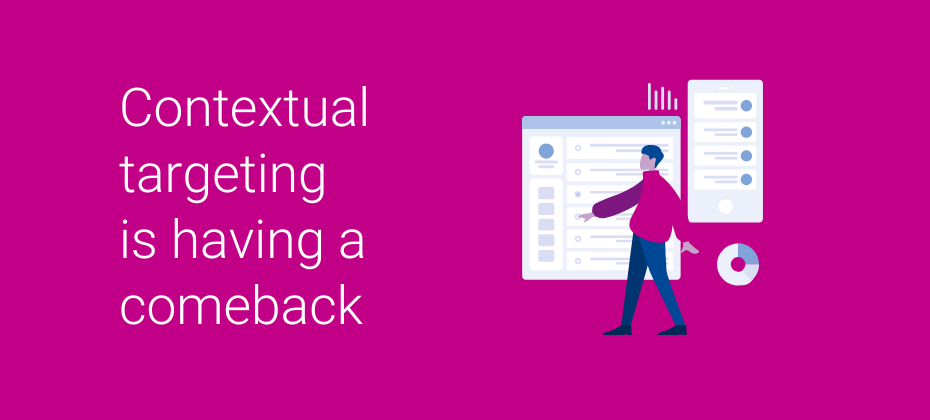
Contextual targeting is having a comeback, and it’s smarter, sharper, and more strategic than ever before. By 2030, annual contextual advertising spend is anticipated to reach $562 billion! As marketers move away from cookie-based targeting and adjust to a privacy-first digital world, contextual advertising is becoming one of the most effective ways to reach engaged audiences. Unlike the basic contextual keyword targeting of the past, today’s contextual strategies are built on data, machine learning, and deep audience insights. Experian, with Audigent, plays a key role in powering this evolution, enabling marketers to execute contextual campaigns with the precision, performance, and compliance needed for today’s environment. Let’s talk about how advertisers are reaching audiences in a changing advertising era with smarter contextual targeting. What is contextual targeting? Contextual targeting, by definition, is a cost-effective, privacy-safe way to engage audiences based on what they’re reading or watching in the moment without relying on personal identifiers. It places ads on webpages that contain content relevant to your product or service. Contextual targeting vs. behavioral targeting The concepts of contextual and behavioral targeting are commonly confused. Both aim to deliver relevant ads, but their methods differ significantly. Let’s break it down. Behavioral: Based on online behaviors Behavioral targeting builds user profiles based on factors like browsing history, clicks, and purchases, tracking users across platforms using cookies and device IDs. For example, if someone researches new SUVs on multiple sites, they might see car-related ads long after they’ve stopped actively looking. While 68% of consumers say they’re concerned about how their data is used in advertising, marketers have the opportunity to build trust through better targeting with Experian. We help brands meet rising consumer expectations with responsible, privacy-forward behavioral data and targeting options that enable you to reach audiences effectively while aligning with your privacy and control needs. Contextual: Based on content and environment Behavioral targeting will continue to play a valuable role in personalized marketing strategies, but contextual targeting is a compelling alternative or complement for strong performance in a privacy-safe, scalable, cost-conscious way. Contextual targeting focuses on the ad environment. It analyzes the page's content, such as keywords, tone, and structure, and serves ads that align with that context without personal identifiers or user tracking. With Experian Marketing Data, you can enhance contextual targeting further by layering in data about who’s likely to be on the page. That combination of content signals and audience intent creates smarter, more privacy-compliant campaigns that perform better. Innovations in contextual targeting In its early form, contextual targeting depended on simple keyword matches. While functional, it lacked nuance and often resulted in broad or irrelevant placements. Today, the approach is far more intelligent. Thanks to AI, machine learning, and natural language processing (NLP), platforms can now assess the full context of a webpage, analyzing tone, sentiment, structure, and content depth to determine the best ad match. Contextually-Indexed Audiences Experian’s Contextually-Indexed Audiences take contextual targeting one step further by analyzing traffic from websites and mobile applications to identify the types of frequent visitors to those pages with the power of rich consumer insights. Instead of simply showing up on relevant pages, brands can reach pre-qualified audiences mapped to those environments, combining intent, content, and data-driven strategy in a single solution. This is where contextual targeting is headed and why it's no longer just an alternative to behavioral but a strategic advantage in its own right. A privacy-first future Even as third-party cookies remain in use, their long-term reliability is uncertain, and the industry continues moving toward solutions that don’t depend on personal identifiers. Laws like the General Data Protection Regulation (GDPR) and California Consumer Privacy Act (CCPA) have led advertisers to rethink how they engage audiences, shifting focus from individual tracking to content and context. With modern tools, advertisers can use contextual targeting programmatic strategies to reach audiences in privacy-compliant ways that still deliver high performance. Programmatic platforms like demand-side platforms (DSPs) now offer pre-built contextual segments by industry, interest, seasonality, and more. In a few clicks, marketers can launch campaigns that align with content environments where consumers are already engaged without behavioral tracking. For brands looking to future-proof their media strategies, contextual is one of the few options that checks every box. Why more marketers are using contextual targeting Contextual targeting can help you grow your audience, drive web traffic, boost visibility, and increase conversions as data privacy regulations grow stricter worldwide. Here’s a deeper dive into the benefits of this targeting strategy. Connect with ready-to-engage audiences One of contextual targeting's greatest advantages is the ability to meet consumers exactly where and when they’re most receptive. It places your ads on pages where they naturally add value to the user experience. When someone is actively reading or watching content about a specific topic, they’re already in the right mindset, which makes your ad feel more like a helpful recommendation than an interruption. For example, if someone is reading a blog post comparing hiking backpacks, they’re far more likely to engage with an ad for outdoor apparel or trail shoes than one for an unrelated product like kitchenware. Drive sales and revenue while lowering costs Another draw of contextual targeting is its affordability for brands with limited budgets. It doesn’t require third-party data, identity graphs, or tracking infrastructure, so it’s easier on your media budget. By aligning ads with page context, brands can also see real business results, such as: Lower cost per thousand impressions (CPM): Since contextual ads are served based on the content of the page rather than user profiles, they often have a lower price tag — especially in verticals where access to behavioral segments may be more competitive. Reduced cost-per-acquisition (CPA): More relevant impressions mean fewer wasted clicks and better ROI. Lower cost-per-click (CPC): On networks like Google Display, CPCs for contextually targeted ads can be as low as $0.45, especially in e-commerce and consumer goods sectors. Higher conversion rates: Ads placed in relevant environments outperform generic placements, which increases the likelihood of action and conversion. Higher lifetime customer value (LTV): Users who arrive at your site from contextually aligned ads are more likely to convert and become repeat customers, driving long-term revenue. Quick and easy setup, built to perform Contextual campaigns can also be launched quickly, often within a day, and produce immediate results. One powerful option is Experian’s Contextually-Indexed Audiences, which combines real-time analysis from over two million websites with access to more than 1,400 trusted audience segments. Available through top demand-side platforms’ contextual marketplaces and Audigent private marketplaces (PMPs), this solution offers a scalable way to reach high-intent consumers without cookies or IDs. Getting started is simple. With a few inputs like relevant topics, keywords, or content categories, you can activate ads in environments where your audience is already engaged. And the best part? The ease and speed to launch doesn’t mean you’re sacrificing results. Because your ads show up alongside content your audience is already interested in, they feel timely and relevant, which leads to more clicks, stronger engagement, and better overall performance. Personalized experience based on known interest Consumers crave personalization. In fact, Deloitte conducted a 2024 study that found 80% of consumers want personalized brand experiences and spend 50% more with the ones that do. Contextual targeting meets that expectation by delivering relevance in the moment without tracking users’ online behavior.Experian’s Contextually-Indexed Audiences use contextual cues across the web to find common sets of audiences and identify where high-intent audience segments tend to show up. This helps advertisers deliver relevant, privacy-safe messaging to consumers who are more likely to engage, thereby building trust, capturing attention, and increasing performance while respecting user privacy. Brand safety Contextual targeting even helps brands avoid reputational pitfalls. With the help of AI and NLP, today’s contextual tools can assess what a page says and how it says it. That means you’re not just protecting user privacy but also your brand by ensuring your ads appear in relevant, trustworthy environments that reflect your values. Contextual targeting examples Contextual targeting works across nearly every industry, helping brands connect with audiences based on the content they’re consuming in the moment. Here are a few examples of this in action across verticals. Contextual targeting for automotive buyers Most car buyers don’t just walk onto the lot. They arrive informed, having begun their journey online, researching makes, models, financing options, trade-in values, and credit requirements. It’s during this discovery phase that contextual targeting shines. Advertisers in the automotive space can serve ads alongside car reviews, dealership comparisons, or articles about electric vehicle tax credits, connecting with shoppers actively gathering information and signaling strong purchase intent. When your ad appears in the middle of that research journey, it feels like the next logical step. Contextual targeting also helps local dealerships and national brands stay top of mind during key decision-making moments without relying on third-party cookies. Contextual targeting for first-time parents New parents are one of the most information-hungry audiences online. From sleep training and stroller reviews to feeding schedules and baby-proofing tips, they consume a massive amount of content across various topics. That content provides a rich canvas for contextual targeting. Brands selling baby gear, wellness products, insurance plans, or parenting services can place ads on relevant articles and forums, connecting with parents when they’re researching their options and making purchase decisions. Contextual targeting for political campaigns Contextual targeting helps political advertisers connect with voters in relevant, mission-aligned environments. In a time when misinformation and divisiveness can influence public perception, maintaining this control is more critical than ever. With contextual targeting, campaigns can place their ads alongside trustworthy, high-quality content that addresses issues relevant to their supporters, whether it’s local policy, national news, or editorial commentary aligned with their platform. Advertisers can also avoid content that may contradict their message or brand values. The future of contextual targeting While Google no longer plans to fully deprecate third-party cookies, the industry has already moved forward. Most marketers have invested in cookieless solutions, and that momentum isn’t slowing down. As contextual targeting becomes even more essential to future-proofing media strategies, its effectiveness depends on the quality and responsibility of the data behind it. That’s where Experian leads the way. Experian Marketing Data as the foundation At the core of Experian’s contextual targeting capabilities is Experian Marketing Data: a rich, privacy-compliant data set built from verified offline sources. This foundational data powers everything we do and fuels the full suite of Experian’s audience and targeting solutions. Marketing Attributes and Audiences One of the key products built from this data is Marketing Attributes, which transforms raw information into detailed, privacy-safe variables like lifestyle preferences, financial behaviors, and media habits. These attributes form the building blocks of Experian Audience solutions, allowing you to create highly specific segments tailored to your goals. When applied to contextual targeting, these segments help you align your messaging with the types of content your ideal audiences are consuming in real time. We’ll help you activate contextually relevant campaigns using real audience insight to place the right message in the proper environment at the ideal moment. Contextually-Indexed Audiences Powered by Experian Marketing Data, Contextually-Indexed Audiences brings a new level of precision to contextual targeting. By analyzing traffic from over two million websites and apps, we offer access to 1,400 audience segments (like luxury shoppers or frequent travelers) that are most likely to visit specific content. This lets you place your message in environments where your target customers already are, combining contextual relevance with data-driven intent. It’s a smarter, privacy-safe way to reach the right people without relying on cookies or user tracking. You can activate these audiences instantly through the top demand-side platform’s contextual marketplace or partner with Audigent to create a custom PMP. A PMP offers more control and flexibility and allows you to enhance campaign performance with additional performance optimization capabilities and activation across any media-buying platforms. Experian collaboration with Audigent and Peer39 Experian and Audigent partner to deliver SmartPMPs, or private marketplace deals that give advertisers access to premium inventory and privacy-first data activation in one streamlined solution. What makes this partnership unique is Audigent’s supply-side integration. Instead of only running audience segments through the DSP, SmartPMPs pair Experian’s high-performing audiences with curated inventory from thousands of publishers, all accessible through a single deal ID. This supply-side approach unlocks: Better reach across CTV, display, video, and more Stronger performance through real-time supply optimizations Personalized campaigns that don’t rely on cookies or user-level identifiers We’ve also partnered with Peer39 and Audigent to expand contextual targeting capabilities further. These partnerships make it possible to match Experian syndicated audience segments, including geo-indexed and behavioral data, to contextual signals in real time. Advertisers can now run fully cookieless campaigns with exceptional scale and performance by indexing Experian Marketing Data through our identity graph and activating through platforms like Audigent’s Hadron ID or Peer39’s integrations. In one beta test with Audigent, a major national advertiser used this solution to run a 15-day campaign that exceeded CTR benchmarks by 25% with no cookies or IDs. Talk to an Experian team member today The future of digital advertising is about trust as much as performance. Turn to Experian for help reaching your audience in the right environments using ethically sourced, privacy-first data. We help brands run scalable, contextually aligned campaigns built for today’s privacy landscape and tomorrow’s performance goals. With tools like Marketing Attributes, Contextually-Indexed Audiences, and Audigent PMPs, we make it possible to connect meaningfully without crossing privacy boundaries. Let’s talk about how we can help you lead the way. Latest posts

Supply-side platforms (SSPs) are expected to deliver more than inventory—they’re being asked to support sell-side targeting strategies, campaign results, and proof of performance. To meet that demand, SSPs need more than access to inventory. They need better data, better tools, and a way to bring it all together. Experian’s solutions for SSPs We built Experian’s solutions for SSPs with that demand in mind. By combining identity resolution, audience targeting, and third-party measurement, we help platforms move beyond basic transactions. Whether you’re doing sell-side targeting, supporting direct deals, or looking to support campaign validation, our tools make it easier to create value for buyers—and keep them coming back. Our solutions that help SSPs: Resolve identity across digital touchpoints using our industry-leading Digital Graph Build differentiated audiences using over 2,400 Experian Audiences and Partner Audiences in Audience Engine Support advertiser-direct relationships with tools to create, activate, and host custom segments Measure real outcomes like in-store visitation and sales through Outcomes, our third-party validated reporting suite Together, these capabilities allow SSPs to produce data-driven deals, increase addressability, and meet buyer demand for smarter, more measurable media. Campaign snapshot: Yieldmo + Experian Yieldmo, an advertising platform known for its creative formats and data-informed approach, has already put this solution to work. Here’s how they built a custom strategy for a major athletic retail client using Experian's solutions for SSPs. The challenge: Drive in-store traffic and reach new buyers Yieldmo supports a leading athletic retailer’s seasonal campaigns focused on in-store traffic. This advertiser wanted to reach new buyers—specifically those who might otherwise shop with a competitor. To do this, they needed access to strong audience segments with reliable data and the flexibility to act quickly across channels. This was the first time Yieldmo applied Experian Audiences to this retailer’s campaigns. The stakes were high: the client was looking for better in-store outcomes and a more streamlined activation workflow. The solution: Experian's activation solution for SSPs Using Experian’s Audience Engine, which includes our proprietary and third-party data marketplace, Yieldmo built a flexible, high-performing media plan that spanned display inventory and included both conquesting and primary in-store shopper segments. The team selected and activated: Apparel and footwear audiences built from Experian and partner data providers In-store shopper segments targeting retail behavior signals Competitive purchasers to capture likely buyers from other athletic brands Our data marketplace allowed Yieldmo to combine Experian Audiences with Partner Audiences from providers like Alliant, Circana, Sports Innovation Lab, and Webbula—all in one place. Manual audience creation used to take days. Now, Yieldmo can build and activate campaigns through a streamlined, self-serve workflow. By working in the Audience Engine platform, Yieldmo was able to avoid multiple contracts and manual requests. They filtered audiences by brand, tailored segments to their goals, and launched without delays. “Experian’s data marketplace in Audience Engine fills a critical gap—letting us quickly search by brand, build smarter conquest segments, and activate custom audiences fast.”Abby Littlejohn, Director of Sales Planning, Yieldmo The results: Expected lift in store visits While final in-store lift results are pending, the early performance metrics are promising: Click-through rates are at and above historical benchmarks across both conquesting and primary shopper segments. Using Audience Engine’s self-serve tools, Yieldmo created audiences faster and more easily. They reduced their workload by minimizing the need for manual data wrangling. “We include Experian audience segments in 80% of formal RFPs. Between contract simplicity, data quality, and campaign results, Experian has become our go-to for third-party audience targeting.”Nelson Montouchet, AVP, Strategic Partnerships, Yieldmo Download the full case study Bring this to your platform Whether you’re looking to monetize more effectively, build deeper advertiser relationships, or stand out with sell-side targeting offerings, we designed Experian’s solutions for SSPs to do exactly that. With our industry-leading Digital Graph, over 2,400 syndicated audiences, partner data, flexible self-serve tools, and outcome-based measurement, SSPs can now move faster and go further—without compromising scale or precision. Get in touch with our team Latest posts

Originally appeared in AdExchanger Google’s decision not to deprecate cookies in the Chrome browser after all caused a stir across the industry. Companies invested heavily in developing solutions aligned with the Privacy Sandbox as a survival tactic for the post-cookie landscape. At first glance, Google’s about-face may appear to undercut those efforts. It’s easy, and perhaps even satisfying for some – but inaccurate – to say “all that effort was for nothing.” Given Chrome’s dominance among browsers, AdTech companies had no choice but to prepare for “what if” scenarios. The same goes for cookie deprecation. Google’s plan to end support for third-party cookies would have removed a mechanism that has been a cornerstone of addressability for the past 15 years. To be clear, those efforts have not been wasted. They spurred innovation across the AdTech landscape, driving progress in privacy-first targeting, alternative identifiers, supply-path data activation, and real-time data enrichment – all of which will pay dividends for years to come. Whether born directly from Privacy Sandbox participation or inspired by the broader trend toward privacy reform, industry-wide preparation for cookie loss and browser disruption has yielded tangible benefits. Pressure from Google, Apple, and evolving regulations served as a catalyst for modernization that could shape the next decade of advertising technology. An industry anchored in product innovation AdTech is a fundamentally product-driven industry defined by short innovation cycles and the imperative to build and test rapidly. This DNA enables companies to stay resilient, evolve and deliver innovation. Change is good. Disruption can be even better – but only for those who embrace it. Google’s evolving stance on cookies and Privacy Sandbox doesn’t negate what’s been learned. If anything, it underscores the need to keep innovating. The next wave of disruption is likely right around the corner. The payoff While some may argue that the time and effort spent preparing for cookie loss was wasted, those efforts have functioned as a forcing mechanism for several innovations in data activation. Supply-side data activation and optimization, aka “curation,” is an alternative to the traditional approach to data activation. Unlike the traditional data management platform (DMP) to demand-side platform (DSP) activation flow, curation allows buyers to utilize supply-path data more directly. The upshot? Improved performance and pricing for media agencies and brand advertisers. As curation continues to evolve, it’s poised to play a central role in how advertisers and publishers transact. Real-time data enrichment is another area that has benefited from this period of accelerated innovation. Many companies were compelled to improve their tech stacks to align with Sandbox protocols. These updates, particularly in real-time data enrichment capabilities, are now laying the groundwork for future data activation strategies across both the buy and sell-sides. Exiting out of tunnel vision Over the past five years, the AdTech industry has invested deeply in planning for a future without cookies. Still those investments have been well worth it. While cookies are not going away, the broader deprecation of signal continues. The work that was done to prepare will inevitably inform the next evolution of our industry. Contact us Latest posts

Marketers are under more pressure than ever to deliver personalized, high-performing campaigns—while navigating tighter budgets, shifting privacy expectations, and fragmented tech stacks. Despite an explosion of tools and data sources, the fundamentals of marketing haven’t changed. Every great campaign still starts with a simple question: Who are we trying to reach? The answer depends on how well you understand your customers. Increasingly, that understanding is hampered by data silos, inconsistent identity signals, and disconnected workflows between planning, activation, and measurement. When those pieces don’t align, it leads to inefficient spending, incomplete insights, and missed opportunities. To move forward, marketers need more than better tools—they need a more connected approach. Start with a complete view of the customer The foundation of effective marketing is understanding your audience—not just who they are, but what they care about and how to reach them across devices and platforms. That starts with building a complete customer profile. For many marketers, this means linking persistent offline data—such as name and address—with fresh digital signals like device IDs and online behaviors. When combined, these elements provide a high-fidelity view of the customer that can be enriched with attributes like demographics, purchase behavior, and lifestyle interests. This kind of profile doesn’t just help you understand people—it helps you build audience segments that actually perform. Whether you’re working with your own CRM data or third-party sources, the ability to create addressable segments that are both accurate and scalable is what separates good campaigns from great ones. 🛳️ That’s exactly what MMGY did for Windstar Cruises. By layering first-party data with behavioral and demographic insights, they built custom audiences that more than doubled campaign benchmarks. 🎮 Gaming platform Unity tapped into Experian audiences to understand player behaviors across web, mobile, and connected TV (CTV). These insights helped their advertisers reach gaming audiences more effectively—tailoring creative and delivery to real-world preferences, not assumptions. Activate with precision, not just volume Knowing your audience is only half the battle. The next challenge is reaching them—consistently and efficiently—across multiple channels. This is where fragmentation can creep back in. All too often, marketers build audiences in one system, but activate in another, causing data loss and targeting mismatches. A more connected strategy uses the same identity and audience spine across planning and activation, reducing signal loss and improving accuracy. 👉 Curated private marketplaces (PMPs), for example, allow marketers to match high-quality audiences with premium inventory in a targeted, transparent, and efficient way. These deals let marketers align their spending with their goals—whether that’s lowering cost-per-acquisition or boosting reach in a key vertical. Performance results are bearing this out: PMG By using Audigent’s curated PMP approach in combination with Experian audience data, they delivered campaigns that were 44% more cost-efficient across CTV. Boiron For Boiron, a homeopathic brand, using curated media buying reduced data costs by 30% and beat CPA goals for both video and display by more than 40%. Index Exchange Publishers benefit, too. When Index Exchange included Audigent-curated inventory in their PMPs, they saw an average 70% revenue lift for mobile and a 13% lift for CTV. When identity, audience, and inventory are aligned, everyone benefits—marketers, publishers, and consumers. Measure what matters Too often, measurement is treated as an afterthought. But in a connected campaign, it’s built in from the beginning. By using consistent identity across planning, activation, and measurement, marketers can connect ad exposure to real-world outcomes—whether that’s an online conversion, an in-store visit, or a new customer relationship. This kind of closed-loop measurement turns marketing into a learning engine. You don’t just see what happened—you understand why it happened and can use that information to improve the next campaign. 🛳️ In the case of Windstar Cruises, MMGY used Experian identity to precisely measure how digital ad exposures translated into bookings. That kind of visibility gives marketers more than a report card. It gives them the feedback they need to optimize smarter next time—and prove ROI every time. The future is connected To meet today’s demands, marketers need a new way of working—one that starts with a complete understanding of the customer, builds addressable audiences on a strong identity foundation, activates them precisely across channels, and measures impact in real time. The marketers embracing this approach are already seeing results: stronger performance, more efficient spending, and deeper insights that power what comes next. The future won’t be built on more tools—it will be built on more connection. Connect with us Latest posts
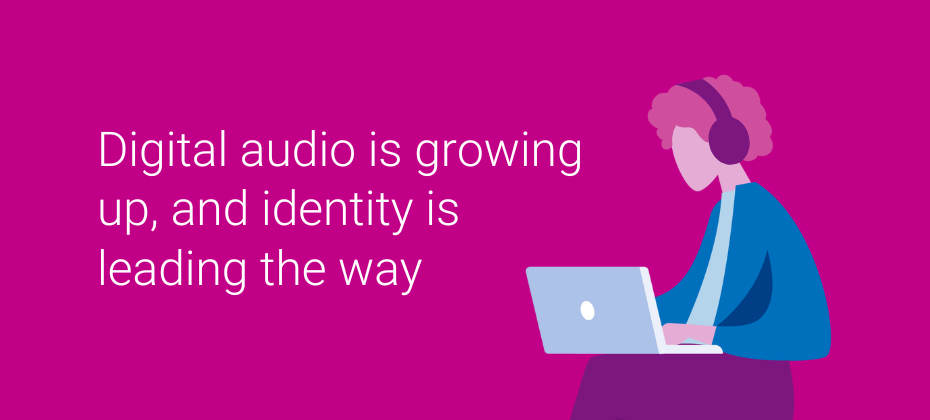
Audio platforms that overcome consumer identity challenges are winning new advertisers and driving higher ROAS. In this article, you’ll hear from leading audio platforms that are solving these challenges—and seeing results. Digital audio is evolving fast. What was once a niche channel of host-read sponsorships and direct buys is now a must-have in the modern media mix. Streaming platforms, podcasts, and digital radio are drawing more ad dollars thanks to audio’s ability to capture attention and connect with listeners. But with growth comes new pressure. Advertisers expect accuracy, scale, and to see results. At the same time, listeners want more relevant content and more personalized ad experiences. That’s where identity becomes essential. With Experian’s identity and audience solutions, audio platforms can: Bolster addressable audience targeting and personalization capabilities. Gain a comprehensive view of listeners’ digital identity to reach audiences across channels. Better understand consumer preferences, enabling advertisers to reach audiences with greater accuracy. Enhance the listening experience with more relevant content. Let’s break down the key challenges in audio—and how Experian can help solve them. Challenge 1: Anonymous listening limits addressability Most listening happens in environments where people aren’t logged in—via apps, smart speakers, and mobile devices. Without logged-in data, platforms struggle to know who’s listening and advertisers are unable to reach those anonymous listeners who don’t have an addressable ID. To overcome the identity gap in unauthenticated listening environments, leading audio platforms are turning to partners that connect fragmented signals—like device type, location, and behavioral patterns—to broader household and individual profiles. By using hashed emails and other alternative identifiers, platforms can begin to make anonymous sessions more addressable. This increase in addressability ensures the platform’s entire userbase can be reached, which leads to an increase in revenue. Experian’s solution Experian's identity spine, comprised of our Digital and Offline Graphs, helps you recognize listeners even when they’re outside your ecosystem. Platforms like Audacy are already leading the way. By integrating Experian’s Digital Graph, they’re gaining a more complete view of listeners’ digital identifiers—enhancing the experience across their app and website. With a better audience understanding, Audacy can deliver personalized content while helping advertisers reach specific groups with greater accuracy. Challenge 2: IP-based targeting falls short Audio has traditionally relied on IP addresses, but that’s no longer enough. A single IP could represent an entire household—or a public setting like a coffee shop. It’s not precise. Forward-thinking platforms are moving beyond IP-based targeting by integrating identity resolution technologies that combine household-level data with device-level intelligence. These solutions help distinguish between shared devices and individual listeners, allowing advertisers to serve more relevant messages without over-reliance on a single signal like an IP address. This layered approach improves precision—especially in dynamic listening environments like vehicles or communal spaces. Experian’s solution Our identity spine links home IPs to households, then connects them to specific devices and individuals. This helps platforms move beyond basic IPs and target real people based on accurate signals—even in shared listening environments like smart speakers and cars. We also help platforms and advertisers integrate alternative IDs—like Unified I.D. 2.0 (UID2)—into their programmatic audio campaigns. That means more reach, without compromising consumer trust. Challenge 3: Audio buying is fragmented From podcasts to streaming to radio, audio lacks consistency in how inventory is packaged and bought. It’s hard for advertisers to run scaled campaigns across channels—and harder still to measure performance. Plus, advertisers don’t think in silos—they think in strategies. If audio can’t connect to their display, connected TV (CTV), and social buys, it loses ground. What they need is a way to define audiences once and activate everywhere. To reduce friction in audio ad buying, platforms are investing in infrastructure that unifies audience insights across formats. By building a centralized view of the listener—regardless of whether they're tuning in via podcast, stream, or radio—publishers can offer advertisers consistent targeting parameters, clearer reporting, and better campaign orchestration. Identity graphs and audiences are playing a growing role in streamlining this complexity and unlocking scale. Experian’s solution Experian helps simplify audio buying. Experian audiences are built on top of our identity graph and are expanded to a deep set of digital identifiers, ensuring accuracy, scale and maximum addressability across channels. Platforms can blend their first-party data with advertiser data and our audiences—then deploy those audiences onsite or activate programmatically across open web and CTV. DAX is doing just that. DAX's partnership with Experian combines Experian’s 2,400+ audiences for targeting and activation with DAX’s innovative audio advertising approach. We’re helping advertisers connect with passionate and engaged listeners nationwide. "Through our partnership with Experian Marketing Services, advertisers can unlock deeper audience insights and execute more impactful digital audio campaigns. By combining our shared market presence, knowledge, and forward-thinking approach, we’re strengthening our digital audio network offering and delivering value to all our advertising partners." Brian Conlan, President of DAX United States In addition to integrating Experian’s Digital Graph, Audacy is also integrating Experian's syndicated audiences to unlock accurate insights like demographics, shopping behavior, and interests - providing listeners with a more personalized advertising experience and advertisers with a higher return on investment. “Historically, audio advertising lacked precise targeting capabilities, making it challenging for advertisers to reach specific audiences. By integrating our digital identity graph and syndicated audiences with Audacy’s platform, we’re transforming how advertisers connect with listeners. This collaboration enables more effective audience targeting and delivers personalized, impactful audio experiences across all channels.”Chris Feo, Chief Business Officer, Experian Privacy is non-negotiable Everything we do is privacy-forward by design. Backed by Experian’s Global Data Principles and decades as a regulated institution, we rigorously vet every data source to ensure compliance with all federal and state laws. Build an audio strategy that performs with Experian Your advertisers want more from their audio investments. With Experian, you can give it to them. We help you: Expand digital addressability to maximize reach for marketers and drive revenue growth for your platform. Create and activate addressable audiences across all channels. Enhance the listening experience with relevant content and personalized ads. Audio has always been a powerful way to connect. Now, it’s ready to perform. Let's connect Latest posts
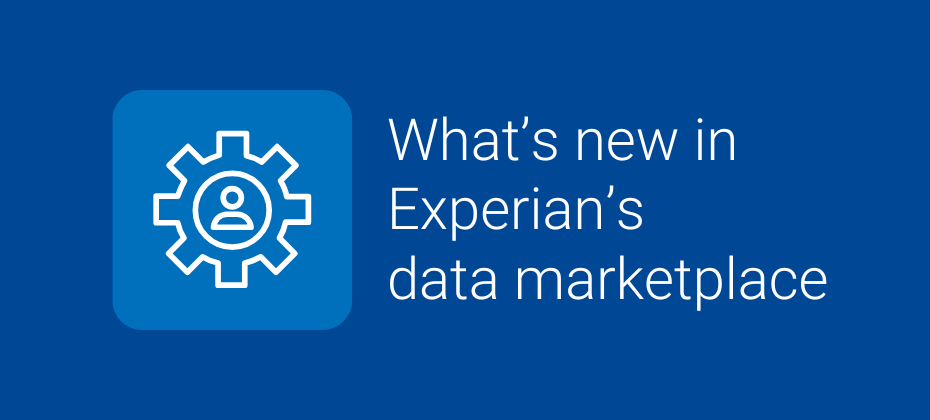
When we launched our data marketplace earlier this year, we set out to transform how the industry discovers and activates privacy-safe audiences and maintains addressability across display, mobile, and connected TV (CTV). Yieldmo was one of the first adopters and their story speaks volumes about what’s possible when flexible tech meets premium data. Large retail brand boosts in-store traffic with Yieldmo and Experian Yieldmo, an advertising platform known for its inventive, AI-powered creative formats and privacy-first inventory, partnered with Experian to support a leading athletic retailer’s campaign focused on driving in-store traffic. The goal? Attract in-store shoppers likely to purchase from competitors, particularly during key sales windows. Using Experian’s Audience Engine platform, which includes our proprietary and third-party data marketplace, Yieldmo built a high-performing, self-serve targeting strategy that included both conquesting and in-store shopper segments. With the ability to easily combine Experian Audiences and Partner Audiences, like those from Alliant, Circana, Webbula, and Sports Innovation Lab, Yieldmo quickly built precise apparel and footwear audiences. Using Experian’s identity graphs in Audience Engine, Yieldmo increased cross-channel addressability to maximize campaign scale and impact. “Experian’s data marketplace in Audience Engine fills a critical gap, letting us quickly search by brand, build smarter conquest segments, and activate custom audiences fast. The platform is flexible and the support is hands-on and reliable.”Abby Littlejohn, Director of Sales Planning at Yieldmo With self-serve setup that cut down manual work, the ability to build highly tailored audiences, and expected lift in store visits, Experian helped the team achieve standout results. "We selected Experian as our primary third-party data partner based on contract ease, audience quality, and speed. Through Experian, we can find high-performing audiences from multiple providers that meet our client’s targeting objectives. We include Experian audience segments in 80% of formal RFP proposals and are in active discussions on how to optimize for future campaigns—making Experian a go-to partner for third-party targeting.”Nelson Montouchet, AVP, Strategic Partnerships, Yieldmo More data, more reach: Experian’s data marketplace fuels smarter targeting across ad platforms Today, just months after launch, Experian’s data marketplace is gaining traction across the ecosystem. Over 10 platforms, including leading supply-side platforms (SSPs) and TV platforms such as Madhive, OpenAP, and Optimum, are now actively utilizing our data marketplace to enhance their activation capabilities. As privacy rules tighten and many identity signals start to fade, a lot of activation platforms are finding it tougher to reach their audiences. This is where our data marketplace shines, with one of the most comprehensive identity graphs out there, 126 million households, 250 million individuals, and over four billion active digital IDs, we make it easy to activate audiences while keeping addressability high across channels. We preserve accuracy when scaling to digital IDs via our identity graphs since Experian is rooted in offline data, which provides better connections and smarter targeting. “Our long-standing partnership with Experian and breadth of Experian's data marketplace, combined with the interoperable, direct matching methodology of our Open Identity solution, make it possible for OpenAP to enable advertisers and agencies to use best-in-class data partners to build audiences with the highest fidelity and consistently reach audiences at scale wherever they are consuming content across premium video.”Chris LoRusso, Chief Business Officer at OpenAP Experian’s data marketplace has grown to include over 20 premium data providers, such as: “We’re thrilled to bring PlaceIQ’s privacy-first, visit-based audiences to Experian’s marketplace, giving brands quick and easy access to high-intent shoppers. From recent big-box customers to yoga-studio regulars, advertisers can add real-world relevance to campaigns across every channel.”Brian Bradtke, Head of Partner Development, Precisely PlaceIQ These partnerships bring unique value to platforms looking to understand and engage audiences more effectively, whether through physical location intelligence, sports and fandom insights, or behavioral intent signals. What’s next We're focused on expanding our data ecosystem and helping platforms and marketers turn fragmented data strategies into a unified competitive advantage. If Yieldmo’s story is any indication, this is just the beginning. Let’s connect and explore how Experian’s data marketplace can help you drive more revenue, scale your audience reach, and stay ahead of privacy shifts. Connect with us Latest posts
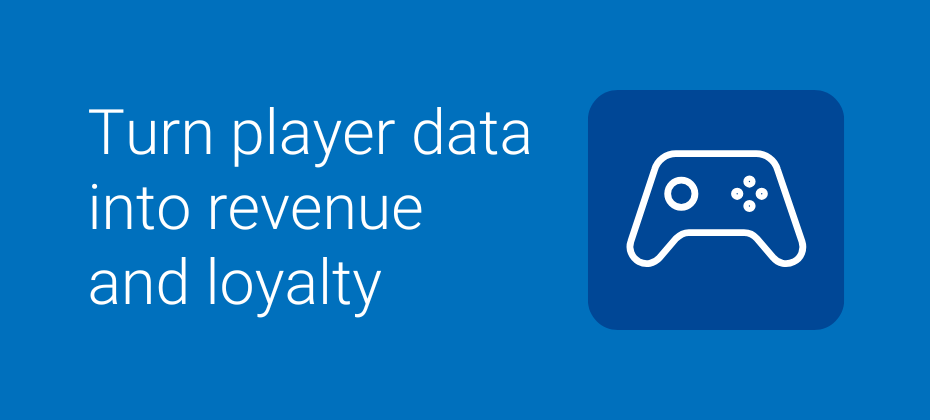
Gaming companies sit at a unique crossroads: they’re part entertainment powerhouse, part tech platform, part media company. Whether you’re publishing blockbuster titles, running a mobile game network, or building immersive in-game ad experiences, you have access to vast amounts of player data—and massive potential for growth. What's standing in the way of growth and loyalty Video game publishers and platforms are increasingly turning to data to understand, engage, and retain their players. But that’s easier said than done. Here are the top challenges they face: Data lives in silos. Gaming companies often collect data across multiple platforms—console, PC, mobile—but can’t stitch together a full view of the player across devices and titles. Identity is hard to resolve. Players interact across games, apps, websites, and platforms. It’s tough to connect all those signals and create a consistent, personalized experience. Privacy is non-negotiable. Regulations are tightening. Any solution must not only be powerful—it must be privacy-safe. Ad performance is difficult to measure. It’s often unclear which campaigns are driving engagement, conversions, or purchases—especially across fragmented digital touchpoints. How Experian can help you win with data and identity Experian helps gaming companies stop leaving value on the table. We turn scattered player data into a single, unified view—giving you the foundation to better understand and engage your players. Our approach: Organize, enrich, activate 1. We clean and unify your data We help you build a solid identity foundation by resolving messy, duplicate, or outdated records across systems. That means your player data from mobile, console, PC, and web all connects—giving you a clear view of how your users engage across games and platforms. 💡 How it’s working: A global interactive gaming company is partnering with Experian to unify and enrich player profiles across systems—boosting the performance of both player engagement campaigns and in-game monetization strategies. 2. We deliver deep customer insights With Experian, you go beyond surface-level data. We help you understand player behaviors, financial attributes, interests, and lifestyle factors—fueling more personalized experiences, smarter segmentation, and better monetization strategies. 💡 How it’s working: A major game developer used Experian’s data enrichment tools to gain deeper insights into player behavior and financial attributes—enabling more personalized in-game offers, smarter audience segmentation, and stronger player retention. 3. We enrich profiles and help you activate across channels We enhance your player records with hundreds of attributes—so you can create custom segments that work. Then, we help you activate those audiences in real-time across digital, social, and programmatic platforms. 💡 How it’s working: A global gaming publisher used Experian to build custom audiences and activate across programmatic channels, driving higher in-game engagement and ad ROI. Turning audiences into ad revenue In addition to improving their own player marketing, gaming companies are unlocking a second growth engine: ad revenue from non-endemic brands. Much like retail media networks, game publishers and platforms are realizing the value of their audience data. From airlines and automakers to QSR and CPG brands, advertisers are taking notice of the high-value, high-intent audiences inside game environments. But to attract that ad spend, publishers need to offer more than impressions—they need precise audience targeting, cross-device identity, and reliable measurement. How Experian helps drive better ad performance To appear authentically to a gamer, you need to know who they are and what they care about. Experian helps marketers understand a person’s behaviors and preferences to enable relevant, personalized advertising. And since nobody wants to see the same ad ten times during a session, we help manage ad frequency across devices and placements to protect the player experience. Our approach: Extend reach, measure results 1. We expand your digital reach Experian makes it easier to find and connect with your players wherever they are—across devices, platforms, and publishers. We help you build scalable audiences you can reach programmatically and with precision. 💡 How it’s working: Unity, a leading gaming platform, is redefining the way marketers reach their audiences across major and emerging channels. They’ve tapped into Experian’s syndicated audiences to gain player insights and help advertisers connect with gaming audiences across mobile, web, and connected TV (CTV) based on behaviors and preferences. 2. We help you measure what matters Whether your goal is app installs, in-game purchases, ad engagement, or player retention, we help connect the dots. You’ll know which campaigns are driving action—and where to double down. 💡 How it’s working: A leading global game publisher is working with Experian to enrich player profiles, build and activate audience segments, and measure how campaigns drive in-game engagement and purchases—giving them a clearer view of ROI across digital channels. Why choose Experian Whether you’re trying to build stronger player relationships or turn your audience into a high-performing advertising engine, Experian gives you the data and identity foundation to make it happen. We help you: Organize and clean your player data Resolve identities across digital touchpoints Enrich your data with deep, actionable insights Build and activate target audiences Measure impact across the player journey Let's power up together We’re already supporting leading brands across the gaming ecosystem—from global game publishers and mobile app developers to in-game ad networks and gaming platforms. And we’re ready to help more companies harness the full power of their data. Get in the game with us 🎮 Latest posts
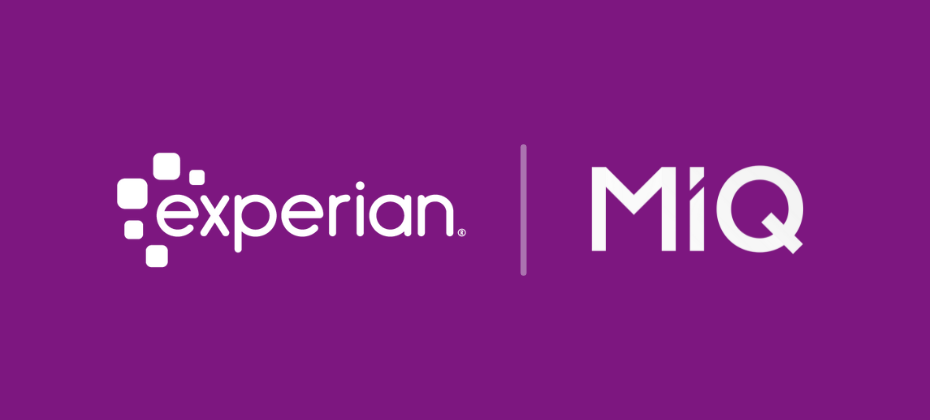
As a programmatic media partner for marketers and agencies, MiQ’s mission is to ensure their clients’ media investments are spent on the right audiences in the right environments. MiQ needed a stronger way to unify audience insights, increase scale, and improve efficiency amidst signal loss. To meet this challenge, MiQ integrated Experian’s Digital Graph into their Identity Spine, creating a more comprehensive view of their clients’ target audiences and ensuring their data-driven solutions remain effective, regardless of the signal source or identifier in use. What is Experian's Digital Graph? Experian’s Digital Graph is like a puzzle, connecting billions of digital identifiers to create a complete view of consumers. As signal loss makes targeting harder, our Digital Graph helps marketers stay connected by linking cookies, mobile ad IDs (MAIDs), hashed emails (HEMs), IP addresses, connected TV (CTV) IDs, and universal IDs, like Unified ID 2.0 (UID2) and ID5. We put the pieces together, matching first-party data to a variety of digital IDs for better targeting, measurement, and cross-device insights—so you don’t have to. Challenge: Strengthen targeting capabilities amidst signal loss MiQ needed to stay agile in its strategy and partnerships to ensure digital connectivity amidst ongoing signal loss. To maintain campaign performance and scale, MiQ sought privacy-first partners they could integrate into their Identity Spine. MiQ’s primary objectives included: Strengthen audience targeting across all digital environments, with or without cookies. Reach target audiences in privacy-compliant ways. Maintain or increase the scale — even as reliance on cookie-based targeting declines. The solution: Integrating Experian's Digital Graph into MiQ's Identity Spine MiQ incorporated Experian’s Digital Graph, licensing HEMs, UID2s, and third-party partner cookies, into their proprietary Identity Spine. MiQ’s Identity Spine seamlessly connects over 60 cookieless data feeds and 25 ID solutions. “Experian’s Graph has bolstered our already comprehensive, multi-ID Identity Spine with incredible data on cross-device ownership and cross-channel behavior.”Georgiana Haig, Strategy and Partnerships Director, MiQ Results: MiQ expanded the reach and scale of their Identity Spine The integration of Experian’s Digital Graph with MIQ’s Identity Spine enabled marketers to find, grow, and measure customers across screens even as signal loss evolves and traditional identifiers fluctuate. The integration allowed MiQ to: Create a unified view: MiQ now has a unified view of its clients’ target audiences, enhancing their audience understanding with the addition of 6.5 devices to each matched IP address, enhancing scale and targeting capabilities. Increase scale: By matching first-party data to multiple universal IDs, MiQ expanded its reach across devices, contributing to a 51% increase in seed audience reach and and a 64% increase in reaching using universal IDs. Improve efficiency: The combination of Experian’s data with MiQ’s Identity Spine improved cross-device ID resolution, leading to more accurate measurement and reporting with a 70% match rate in associating MiQ-provided IP addresses with universal IDs. Stay connected to your audience despite signal loss with Experian MiQ’s Identity Spine stays strong through their partnership with Experian, keeping audience targeting effective even as signal loss changes the landscape. Download the full case study to learn more about how Experian’s Digital Graph enabled MiQ to strengthen audience targeting despite ongoing signal loss. Download the full case study Contact us About MiQ MiQ is a global programmatic media partner for marketers and agencies, with 19 offices across Europe, North America, and the Asia-Pacific region. They specialize in connecting data from multiple sources to solve business problems for their clients. They are award-winning experts in data science, analytics, and programmatic trading, focused on ensuring clients’ media investments are spent on the right audiences in the right environments. To learn more, please visit www.wearemiq.com. Latest posts